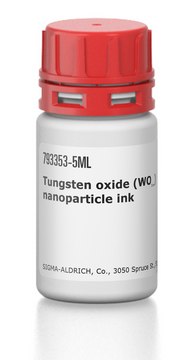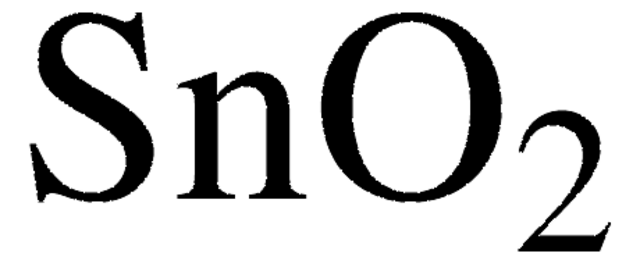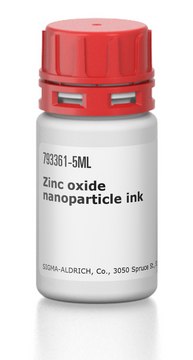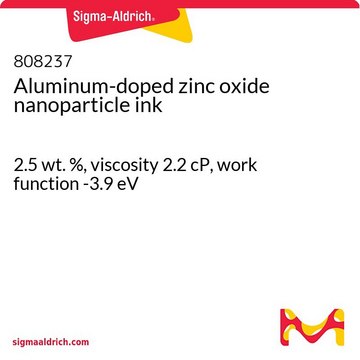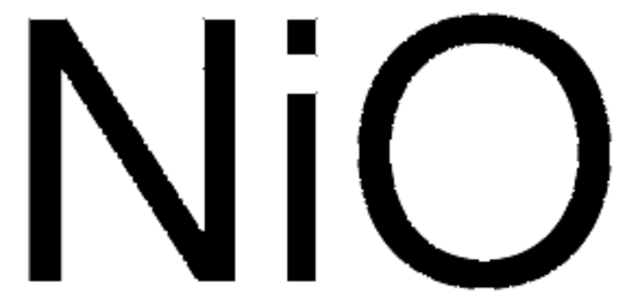901071
Tin(IV) oxide nanoparticle ink
2.5 wt%, viscosity 4 cP
Synonym(s):
Avantama N-30, Ink for charge selective layers in printed electronics, SnO2 ink, Tin oxide nanoparticle dispersion
Select a Size
Select a Size
About This Item
Recommended Products
Quality Level
description
Solid content: 2.5 wt% crystalline SnO2 in the mixture of butanols
form
dispersion
color
translucent gray-brown
particle size
7-20 nm
viscosity
4 cP
Looking for similar products? Visit Product Comparison Guide
1 of 4
This Item | 776688 | 716812 | 716898 |
|---|---|---|---|
| contains CTAB as stabilizer | contains CTAB as stabilizer | contains CTAB as stabilizer | contains - |
| concentration >30 μg/mL in H2O | concentration >30 μg/mL in H2O | concentration >30 μg/mL in H2O | concentration ≥1800.0 μg/mL |
| diam. × L 10 nm × 59 nm (±10%) | diam. × L 10 nm × 67 nm (±10%) | diam. × L 10 nm × 38 nm , ±10% | diam. × L 10 nm × 41 nm ± 10% |
| diameter 10 nm | diameter 10 nm | diameter 10 nm | diameter 10 nm |
| density 1.00 g/mL at 25 °C | density 1.00 g/mL at 25 °C | density 1.00 g/mL at 25 °C | density 1 g/mL at 25 °C |
Application
- This SnO2 nanoparticle ink is for charge selective layers in printed electronics.
- This SnO2 nanoparticle ink is for spin-coating, doctor blading, slot-die or inkjet printing.
Caution
- Storage: In dark at room temperature.
- Prior to application: Shake, and filter through 0.2 or 0.45 μm PP filter. Do not use PTFE filter.
- Ink can be diluted with butanol.
- Thickness optimization may be necessary.
- Drying of deposited SnO2 films at >100 °C.
Legal Information
Signal Word
Danger
Hazard Statements
Precautionary Statements
Hazard Classifications
Acute Tox. 4 Oral - Eye Dam. 1 - Flam. Liq. 3 - Skin Irrit. 2 - STOT SE 3
Target Organs
Central nervous system, Respiratory system
Storage Class Code
3 - Flammable liquids
WGK
WGK 1
Flash Point(F)
85.1 °F - closed cup
Flash Point(C)
29.5 °C - closed cup
Regulatory Information
Choose from one of the most recent versions:
Already Own This Product?
Find documentation for the products that you have recently purchased in the Document Library.
Articles
Find advantages of inorganic interface layer inks for organic electronic & other applications.
Our team of scientists has experience in all areas of research including Life Science, Material Science, Chemical Synthesis, Chromatography, Analytical and many others.
Contact Technical Service
